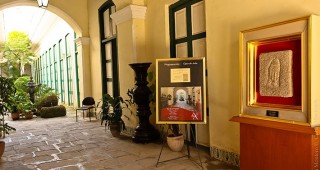 (+53)7832 - 4551
(+53)7832 - 4551Founded by Cuba’s National Poet Nicolás Guillén, the National Union of Writers and Artists of Cuba is housed in a mansion, former property of Juan Gelats, built in eclectic style in the 1920s. Use was made of this house’s corner position to highlight the entrance way. The ground plan is centered on the hall area, which is dominated by a white marble staircase with iron railings. The other spaces, with more discreet decoration, are linked together by passages that radiate from the hall. In addition to the notable entrance way, the wrought iron fence gives the residence a monumental appearance.
Writers and artists meet regularly at Café Hurón Azul, which is also a venue for live music. The book store sells magazines on Cuban literature, music and arts in general.



 Eclectic
Eclectic







